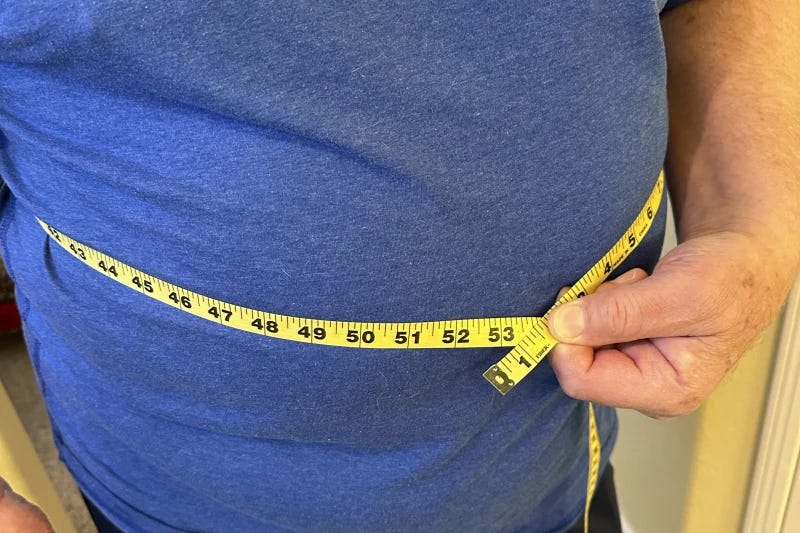Experts Propose New Obesity Definition, Moving Beyond BMI
A global group of experts has proposed a new approach to defining and diagnosing obesity, shifting away from the controversial body mass index (BMI) and aiming to more accurately identify individuals who require treatment for the disease linked to excess body fat.
In recommendations released Tuesday evening, the experts suggest that obesity should no longer be defined solely by BMI, a calculation based on height and weight, but should also incorporate other measurements such as waist circumference, along with evidence of health problems related to excess weight.
Obesity affects over 1 billion people worldwide, and in the U.S., nearly 40% of adults are affected, according to the U.S. Centers for Disease Control and Prevention.
“The goal is to create a more accurate definition, allowing us to better target those who need help the most,” said Dr. David Cummings, an obesity expert at the University of Washington and one of the 58 authors of the report published in The Lancet Diabetes & Endocrinology journal.
The new report introduces two diagnostic categories: clinical obesity and pre-clinical obesity.
Those with clinical obesity meet BMI and other obesity markers and show signs of health issues caused by excess weight. These could include heart disease, high blood pressure, liver or kidney problems, or chronic joint pain. These individuals would be eligible for treatments such as diet and exercise interventions, along with obesity medications.
People with pre-clinical obesity are at risk for these health problems but do not yet exhibit any ongoing illnesses, according to the report.
BMI has long been criticized for being an imperfect measure of obesity, as it can overestimate or underestimate the condition. For example, individuals with high muscle mass, like athletes, may have a high BMI despite having low fat levels. The current obesity threshold is a BMI of 30 or higher, but excess body fat does not always correspond to a BMI above 30.
Under the new criteria, preliminary analysis suggests that about 20% of people previously classified as obese would no longer meet the definition. At the same time, about 20% of people with lower BMI but significant health effects would now be classified as clinically obese.
“This new system would not drastically change the overall percentage of people with obesity, but it would improve the accuracy of diagnosing those with clinically significant excess fat,” Dr. Cummings said.
The new criteria have received endorsement from over 75 medical organizations worldwide, but it remains uncertain how quickly and widely they will be implemented. The report notes that putting these recommendations into practice would come with significant costs and workforce challenges.
A spokesperson for the health insurance group AHIP (formerly America’s Health Insurance Plans) said it is too early to predict how insurance plans will adopt these new definitions in their policies.
Practical challenges remain, said Dr. Katherine Saunders, an obesity expert at Weill Cornell Medicine and co-founder of the obesity treatment company FlyteHealth. For example, while measuring waist circumference may sound simple, current protocols vary, and many healthcare providers are not trained to measure it accurately. Standard medical tape measures are also often too small for individuals with obesity.
Furthermore, distinguishing between clinical and pre-clinical obesity would require comprehensive health assessments and lab tests.
“For these new criteria to be widely accepted, they need to be quick, cost-effective, and reliable,” Saunders said.
Kate Bauer, a nutrition expert at the University of Michigan School of Public Health, expressed concern that the new definitions may confuse the public.
“The public prefers simple messages, and I don’t believe this new classification will significantly change anything,” she said.
Dr. Robert Kushner, an obesity expert at Northwestern Feinberg School of Medicine and co-author of the report, acknowledged that overhauling the definition of obesity will take time.
“This is just the first step,” he said. “It will start the conversation.”
The Associated Press Health and Science Department is supported by the Howard Hughes Medical Institute’s Science and Educational Media Group and the Robert Wood Johnson Foundation. The AP is solely responsible for all content.


